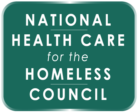Trauma-Informed
Organizations
Research: Trauma-Informed Organizations
Change Package: Safety
Domain
Emotional Safety
Emotional safety can be defined as a state of being where one feels their emotions and psychological state are validated and supported. Someone who is emotionally safe has the capacity to deal and cope with the unique demands of their environment. Attachment and esteem are often markers of a person feels safe during an interaction.
Physical Safety
Physical safety is the absence of harm or injury that can be experienced by any person from a physical object or practices that involve a physical object, which could include furniture, medical equipment, toys, etc.
Psychological Safety
Psychological safety centers on mental well-being, which encompasses perceptions, relationships, and personal trauma triggers.
Crisis Management
Crisis management is the process by which an organization deals with a sudden emergency situation, including a client experiencing a mental health crisis, client death, or a community disturbance (e.g. natural disaster, terrorist attack).

